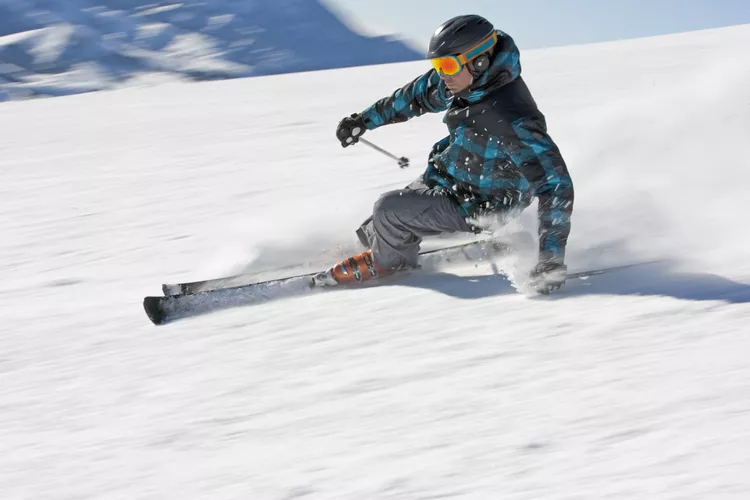Summary
- Average Downhill Speed of Skiers
- Speed and Cross-Country Skiers’ Downhill Speeds
- How to Increase Speed in Downhill Skiing
The average downhill speed of skiers varies by type. The skiing speeds of professional athletes can reach upwards of 150 mph, but most recreational skiers travel at speeds between 10 and 20 mph.
Downhill racers clock in at 40–60 mph, while Olympians tend to ski between 75 and 95 mph, depending on conditions, equipment, and body composition. Additionally, the sport of speed skiing has recorded speeds of more than 158 mph. These skiers— the fastest on Earth—point their skis straight downhill (no turning) on some of the world’s steepest slopes.
There are several ways to clock the speeds of these downhill skiers, whether it be a speedometer from the sidelines or a smartphone skiing app that tracks speed, miles traveled, and vertical feet.
Speed and Cross-Country Skiers’ Downhill Speeds
Speed skiers, who don aerodynamic apparel and ski straight down the mountain without turning, can reach speeds exceeding 150 mph. Notably, in 2016, Simone Origone of Italy broke his own speed record, achieving a new mark of 158.424 mph in Vars, France. At the same event, Valentina Greggio, also from Italy, set the women’s record at 153.53 mph.
However, there really isn’t such a thing as a casual speed skier, as this type of skiing necessitates a level of professional athleticism and control to avoid serious injury. Consequently, speed skiers are those with the least wind resistance and the best control of their skis. In competition, the skiers who reach the bottom of the hill quickest are the winners, which differs from cross-country competitive skiing.
In cross-country skiing, professional racers average about 15 mph for continuous distances up to 35 miles long; most elite ski racers achieve speeds of around 20–25 mph on flat terrains and 35–40 mph downhill. In contrast, recreational cross-country skiers typically clock speeds of around 7–10 mph.
How to Increase Speed in Downhill Skiing
Generally speaking, the straighter the skis are and the tighter the tuck is, the faster a skier will travel downhill. However, dodging obstacles like trees or jumping over small slopes can significantly slow down an athlete’s movement. Therefore, it is crucial to first develop sufficient core strength to control the skis at high speeds when trying to increase speed on a downhill run.
Skiers aiming for faster speeds must always wear the proper safety gear, as increased speed correlates with a higher likelihood of serious injury. Although the idea of speeding down a mountainside may seem exhilarating to amateur skiers, they should first focus on honing the proper skiing techniques to avoid crashes and injuries.
Moreover, skiers should refrain from attempting high speeds in poor lighting conditions, such as near sunset when the sun reflects glaringly off the mountain. This can obscure small snow-covered obstacles in their path. Unpredictable snow conditions or crowded runs are also not ideal for attempting fast speeds.
Finally, recreational skiers should adhere to the rules set by the ski area, which may limit how fast they are allowed to go for their own safety as well as that of other skiers.




